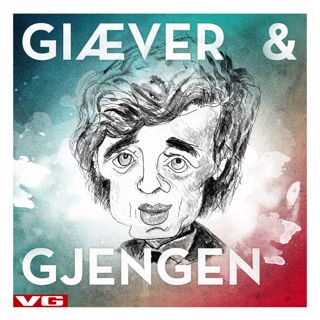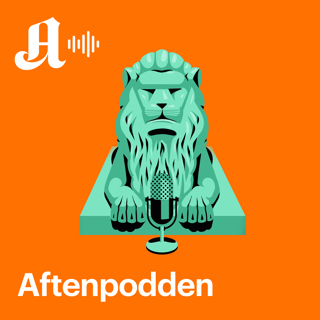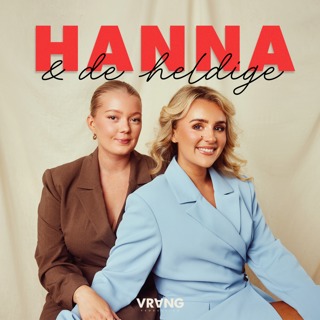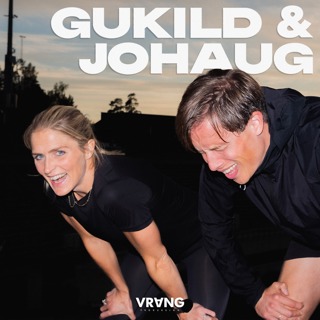
Epstein’s Orbit Explained: Why Not Everyone Is Equal and Why That Matters (Part 2) (12/24/25)
One of the biggest mistakes people keep making when they talk about Jeffrey Epstein is flattening everyone in his orbit into the same category. A photo becomes guilt, proximity becomes participation, and suddenly the conversation collapses into noise. That kind of thinking doesn’t expose Epstein’s operation—it protects it. Not everyone who crossed paths with Epstein was part of his crimes, and pretending otherwise only muddies the water and gives cover to the people who actually mattered. Epstein’s power thrived on confusion, and when we refuse to distinguish between social adjacency and real involvement, we’re doing his work for him.What the record actually shows is a layered system: people who encountered Epstein socially, people who enabled him by looking away or greasing the wheels, people who helped his operation function day to day, and people directly accused of taking part in the abuse. Those categories are not interchangeable, and pretending they are is how accountability dies. Enablers in finance, law, institutions, and government gave Epstein legitimacy and protection, while operational co-conspirators made the abuse repeatable and enforceable. Now, as scrutiny sharpens, the narrative has shifted to “reputations” and demands to “move on.” That’s not accidental. It’s a last-ditch effort to blur the lines again. The only way to stop that is precision—knowing who did what, when, and how, and refusing to let facts be laundered into confusion.to contact me:bobbycapucci@protonmail.comsource: bobbycapucci@protonmail.comBecome a supporter of this podcast: https://www.spreaker.com/podcast/the-epstein-chronicles--5003294/support.
24 Des 20min

Epstein’s Orbit Explained: Why Not Everyone Is Equal and Why That Matters (Part 1) (12/24/25)
One of the biggest mistakes people keep making when they talk about Jeffrey Epstein is flattening everyone in his orbit into the same category. A photo becomes guilt, proximity becomes participation, and suddenly the conversation collapses into noise. That kind of thinking doesn’t expose Epstein’s operation—it protects it. Not everyone who crossed paths with Epstein was part of his crimes, and pretending otherwise only muddies the water and gives cover to the people who actually mattered. Epstein’s power thrived on confusion, and when we refuse to distinguish between social adjacency and real involvement, we’re doing his work for him.What the record actually shows is a layered system: people who encountered Epstein socially, people who enabled him by looking away or greasing the wheels, people who helped his operation function day to day, and people directly accused of taking part in the abuse. Those categories are not interchangeable, and pretending they are is how accountability dies. Enablers in finance, law, institutions, and government gave Epstein legitimacy and protection, while operational co-conspirators made the abuse repeatable and enforceable. Now, as scrutiny sharpens, the narrative has shifted to “reputations” and demands to “move on.” That’s not accidental. It’s a last-ditch effort to blur the lines again. The only way to stop that is precision—knowing who did what, when, and how, and refusing to let facts be laundered into confusion.to contact me:bobbycapucci@protonmail.comsource: bobbycapucci@protonmail.comBecome a supporter of this podcast: https://www.spreaker.com/podcast/the-epstein-chronicles--5003294/support.
24 Des 12min

Mega Edition: The Unsealed Palm Beach County Police Report Into Jeffrey Epstein (Part 11-12) (12/23/25)
The Palm Beach police report reads like the opening chapter of a crime saga everyone wishes had ended sooner. In painstaking detail, investigators laid out how Jeffrey Epstein operated a revolving-door abuse scheme out of his Palm Beach mansion—recruiting underage girls, often as young as 14, under the guise of “massages,” then paying them cash after sexual assaults. The report makes clear this was not a one-off or a misunderstanding; it documents dozens of consistent victim statements, matching descriptions of the house, the routine, the money, and Epstein’s behavior. Detectives noted the sheer volume of victims, the striking similarities in their accounts, and the methodical nature of the abuse—painting a picture of a predator who acted with confidence, repetition, and a belief he would never face consequences.What makes the report so haunting is not just what Epstein did, but how unmistakably obvious it all was. The Palm Beach Police Department concluded there was overwhelming probable cause for felony sex crimes, emphasizing that Epstein’s wealth, influence, and legal maneuvering stood in sharp contrast to the credibility and courage of the girls who came forward. The document reads less like a mystery and more like a warning flare—one that spelled out the scope of the abuse long before the world was forced to confront it. In black and white, the report shows that the truth was there early, detailed, and undeniable—raising the uncomfortable question of why it took so long for justice to even begin catching up.to contact me:bobbycapuccisource:Epstein-Docs.pdf (documentcloud.org)Become a supporter of this podcast: https://www.spreaker.com/podcast/the-epstein-chronicles--5003294/support.
24 Des 27min

Mega Edition: The Unsealed Palm Beach County Police Report Into Jeffrey Epstein (Part 9-10) (12/23/25)
The Palm Beach police report reads like the opening chapter of a crime saga everyone wishes had ended sooner. In painstaking detail, investigators laid out how Jeffrey Epstein operated a revolving-door abuse scheme out of his Palm Beach mansion—recruiting underage girls, often as young as 14, under the guise of “massages,” then paying them cash after sexual assaults. The report makes clear this was not a one-off or a misunderstanding; it documents dozens of consistent victim statements, matching descriptions of the house, the routine, the money, and Epstein’s behavior. Detectives noted the sheer volume of victims, the striking similarities in their accounts, and the methodical nature of the abuse—painting a picture of a predator who acted with confidence, repetition, and a belief he would never face consequences.What makes the report so haunting is not just what Epstein did, but how unmistakably obvious it all was. The Palm Beach Police Department concluded there was overwhelming probable cause for felony sex crimes, emphasizing that Epstein’s wealth, influence, and legal maneuvering stood in sharp contrast to the credibility and courage of the girls who came forward. The document reads less like a mystery and more like a warning flare—one that spelled out the scope of the abuse long before the world was forced to confront it. In black and white, the report shows that the truth was there early, detailed, and undeniable—raising the uncomfortable question of why it took so long for justice to even begin catching up.to contact me:bobbycapuccisource:Epstein-Docs.pdf (documentcloud.org)Become a supporter of this podcast: https://www.spreaker.com/podcast/the-epstein-chronicles--5003294/support.
24 Des 28min

Mega Edition: The Unsealed Palm Beach County Police Report Into Jeffrey Epstein (Part 7-8) (12/23/25)
The Palm Beach police report reads like the opening chapter of a crime saga everyone wishes had ended sooner. In painstaking detail, investigators laid out how Jeffrey Epstein operated a revolving-door abuse scheme out of his Palm Beach mansion—recruiting underage girls, often as young as 14, under the guise of “massages,” then paying them cash after sexual assaults. The report makes clear this was not a one-off or a misunderstanding; it documents dozens of consistent victim statements, matching descriptions of the house, the routine, the money, and Epstein’s behavior. Detectives noted the sheer volume of victims, the striking similarities in their accounts, and the methodical nature of the abuse—painting a picture of a predator who acted with confidence, repetition, and a belief he would never face consequences.What makes the report so haunting is not just what Epstein did, but how unmistakably obvious it all was. The Palm Beach Police Department concluded there was overwhelming probable cause for felony sex crimes, emphasizing that Epstein’s wealth, influence, and legal maneuvering stood in sharp contrast to the credibility and courage of the girls who came forward. The document reads less like a mystery and more like a warning flare—one that spelled out the scope of the abuse long before the world was forced to confront it. In black and white, the report shows that the truth was there early, detailed, and undeniable—raising the uncomfortable question of why it took so long for justice to even begin catching up.to contact me:bobbycapuccisource:Epstein-Docs.pdf (documentcloud.org)Become a supporter of this podcast: https://www.spreaker.com/podcast/the-epstein-chronicles--5003294/support.
24 Des 22min

Martin Nowak And The Harvard Sanctions
Martin Nowak, a prominent Harvard mathematician and longtime collaborator of Jeffrey Epstein, was formally sanctioned by Harvard University following an internal review into Epstein’s post-conviction involvement with the university. Harvard concluded that Nowak had continued to engage with Epstein after his 2008 sex-crime conviction, including soliciting donations, facilitating meetings, and helping integrate Epstein into Harvard’s academic orbit under the guise of scientific philanthropy. As a result, Harvard removed Nowak from his leadership role at the Program for Evolutionary Dynamics, barred him from holding administrative positions, and stripped him of discretionary authority tied to fundraising and institutional representation. While he was not terminated as a faculty member, the sanctions marked a rare and public disciplinary action against a senior academic figure connected to Epstein.to contact me:bobbycapucci@protonmail.comBecome a supporter of this podcast: https://www.spreaker.com/podcast/the-epstein-chronicles--5003294/support.
24 Des 18min

The DOJ And The First Request For Grand Jury Documents In Florida
In a ruling on July 23, 2025, U.S. District Judge Robin L. Rosenberg of the Southern District of Florida denied the Trump administration’s bid to unseal grand jury transcripts from the 2005 and 2007 federal investigations into Jeffrey Epstein. She concluded that the Justice Department failed to present any legal exception allowing disclosure, such as a judicial proceeding or prosecutorial misconduct claim. The court emphasized that “the law does not permit disclosure” absent those narrow exceptions, and declared that “the court’s hands are tied” under the Eleventh Circuit’s strict grand jury secrecy rules.This denial marks the first judicial response to the administration’s attempt to release previously sealed materials amid mounting political pressure. The transcripts in question derive from Epstein’s early federal probes initiated by the U.S. Attorney’s Office in West Palm Beach—not his later indictments. Meanwhile, similar unsealing requests for grand jury materials in Manhattan, tied to Epstein and Ghislaine Maxwell, remain pending and subject to review under different, less rigid legal standards.to contact me:bobbycapucci@protonmail.comsource:Judge rejects effort to unseal Epstein grand jury records in Florida | AP NewsBecome a supporter of this podcast: https://www.spreaker.com/podcast/the-epstein-chronicles--5003294/support.
24 Des 11min

The DOJ And Their Request To Get The Grand Jury Documents Unsealed
The process of unsealing federal grand jury records is deliberately difficult, wrapped in layers of legal insulation under Rule 6(e) of the Federal Rules of Criminal Procedure. Only a federal judge—not the President, not the Attorney General—can authorize disclosure, and even then, only if the requester demonstrates a “particularized need” that outweighs the default presumption of secrecy. Motions must be surgically precise, narrowly tailored, and supported by compelling legal justification. Even successful requests often result in redacted or restricted disclosures, not public transparency. The system is built to prioritize protection over exposure, and accountability often takes a backseat to process.While the courts claim this structure safeguards the integrity of justice, it frequently appears to serve power over truth—especially when politically sensitive material is involved. The legal mechanisms for disclosure exist on paper but function in reality as bureaucratic gatekeeping. Victims, journalists, and the public are told they can seek access, but few ever get it—and fewer still get anything meaningful. The result is a growing skepticism: that secrecy has become less about shielding the innocent and more about shielding the institution itself. The question is, will the courts continue to protect that secrecy at all costs, or will the demand for real transparency finally break through?to contact me:bobbycapucci@protonmail.comBecome a supporter of this podcast: https://www.spreaker.com/podcast/the-epstein-chronicles--5003294/support.
24 Des 20min





















